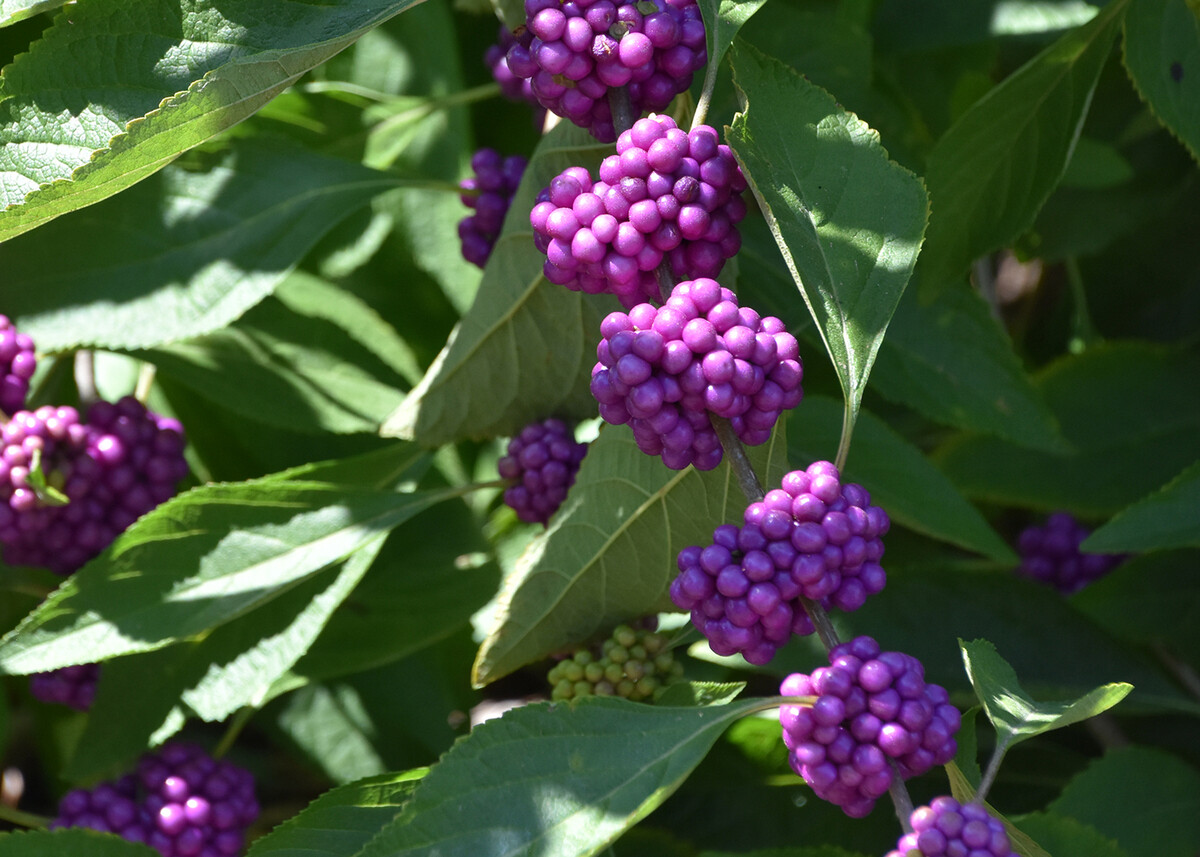
When it comes to stunning and eye-catching plants, few can compare to the beautyberry. With its vibrant purple berries and lush foliage, beautyberry is a true showstopper in any garden or landscape. But there’s more to this incredible plant than meets the eye. In this article, we will uncover 14 unbelievable facts about beautyberry that will leave you amazed and inspired. From its fascinating history and cultural significance to its medicinal properties and role in wildlife conservation, beautyberry is truly a remarkable plant. So, buckle up and get ready to dive into the fascinating world of beautyberry, and prepare to be astounded by its beauty and benefits.
Key Takeaways:
- Beautyberry is a stunning plant with purple berries, rich in antioxidants, and loved by wildlife. It’s easy to grow and has a long history of medicinal use, making it a valuable addition to any garden.
- The beautyberry plant, also known as “American beautyberry” or “French mulberry,” has leaves that can be used to make tea and act as a natural insect repellent. Its vibrant purple color comes from natural pigments called anthocyanins.
The beautyberry is a stunning ornamental plant.
With its vibrant purple berries, the beautyberry adds a pop of color to any garden or landscape. Its unique hue is truly a feast for the eyes, making it a popular choice for those looking to add visual interest to their outdoor spaces.
Beautyberry is known for its medicinal properties.
Traditionally, different parts of the beautyberry plant have been used for various medicinal purposes. Native American tribes and folk healers have utilized its leaves, roots, and berries to treat ailments such as toothache, colic, and fever. Modern research is still ongoing to explore its potential healing properties.
The beautyberry is rich in antioxidants.
Antioxidants are known for their ability to combat free radicals in the body, reducing the risk of chronic diseases. The beautyberry plant boasts a high concentration of antioxidants, making it a valuable addition to any diet or natural health regimen.
Beautyberries have a refreshing citrusy flavor.
While not commonly consumed, the berries of the beautyberry have a tart and slightly sweet flavor with hints of citrus. Some adventurous food enthusiasts have experimented with using beautyberries in jams, jellies, and even cocktails.
The beautyberry plant is a magnet for wildlife.
The colorful berries of the beautyberry are irresistible to many bird species, including thrushes, cardinals, and mockingbirds, who feast on the nutritious fruit. Additionally, the plant attracts butterflies and bees, contributing to the overall biodiversity of an area.
The beautyberry shrub is easy to grow.
Beautyberry shrubs are low-maintenance and can thrive in a variety of environments. They are tolerant of both sun and shade and can withstand different soil conditions, making them a versatile choice for gardeners of all skill levels.
The beautyberry is native to the southeastern United States.
This stunning plant is commonly found in states like Florida, Georgia, and Mississippi. It is well-adapted to the region’s warm and humid climate, making it a beloved native species.
The beautyberry has a long history of use in traditional folk remedies.
Indigenous people have long recognized the beautyberry’s value in traditional medicine. From treating skin irritations to relieving pain and inflammation, this plant has been a staple in natural healing practices for centuries.
The beautyberry plant is a member of the mint family.
Despite its vibrant appearance, the beautyberry belongs to the family Lamiaceae, which includes aromatic herbs like mint, rosemary, and basil. This family is known for its square stems and fragrant oils.
The beautyberry can be used as a natural insect repellent.
The leaves of the beautyberry plant contain compounds that act as natural insect deterrents. Some people have even crushed the leaves and rubbed them on their skin to keep mosquitoes and other pesky bugs at bay.
The beautyberry is also called “American beautyberry” or “French mulberry.”
These alternative names reflect the plant’s origins and characteristics. American beautyberry” highlights its native status, while “French mulberry” refers to its resemblance to mulberry trees found in France.
Beautyberry leaves can be used to make tea.
The leaves of the beautyberry plant can be dried and brewed as a herbal tea. Known for their mild and earthy flavor, beautyberry tea is often enjoyed for its calming properties.
Beautyberry’s scientific name is Callicarpa.
The botanical name “Callicarpa” is derived from the Greek words “kallos,” meaning beautiful, and “karpos,” meaning fruit, a fitting description for this stunning plant with its vibrant berries.
The beautyberry’s vibrant purple color is due to natural pigments.
The striking purple hue of the beautyberry’s berries comes from pigments called anthocyanins. These pigments not only give the berries their vibrant color but are also responsible for their potential health benefits.
Conclusion
In conclusion, the beautyberry is truly a remarkable plant with a plethora of incredible facts. From its vibrant purple berries to its medicinal properties, this plant has captured the awe and interest of botanists and nature lovers alike. Whether you’re looking to add a pop of color to your garden or explore the potential health benefits, the beautyberry is definitely a plant worth discovering.
FAQs
Q: Are beautyberries edible?
A: Yes, beautyberries are edible. While they may not have the best flavor when eaten raw, they can be used in various culinary applications such as jellies, jams, and even pies.
Q: Do beautyberries have any medicinal properties?
A: Yes, beautyberries have long been used in traditional medicine for their potential health benefits. They are believed to have anti-inflammatory and antioxidant properties, as well as being used for their analgesic and antimicrobial properties.
Q: Can beautyberries attract wildlife to my garden?
A: Absolutely! Beautyberries are known to attract birds, especially during the fall season when their vibrant purple berries are at their peak. Birds such as robins, cedar waxwings, and mockingbirds are often seen feasting on these berries.
Q: Can beautyberries grow in different climates?
A: Yes, beautyberries are quite versatile when it comes to climate. They can thrive in a wide range of environments, from the humid subtropics to cooler temperate regions. However, it’s important to choose the right variety that is suitable for your specific climate.
Q: Are beautyberries easy to care for?
A: Beautyberries are relatively low-maintenance plants. They prefer well-draining soil and partial shade, but can tolerate full sun. Regular watering and occasional pruning to maintain their shape are usually sufficient to keep them healthy and thriving.
If you're fascinated by the beautyberry's vibrant purple berries, why not explore the wonders of elderberry's purple berries? Nature enthusiasts will also enjoy learning about native plants like the intriguing compass plant. For those with a passion for outdoor spaces, our article on landscape design is sure to inspire.
Was this page helpful?
Our commitment to delivering trustworthy and engaging content is at the heart of what we do. Each fact on our site is contributed by real users like you, bringing a wealth of diverse insights and information. To ensure the highest standards of accuracy and reliability, our dedicated editors meticulously review each submission. This process guarantees that the facts we share are not only fascinating but also credible. Trust in our commitment to quality and authenticity as you explore and learn with us.


